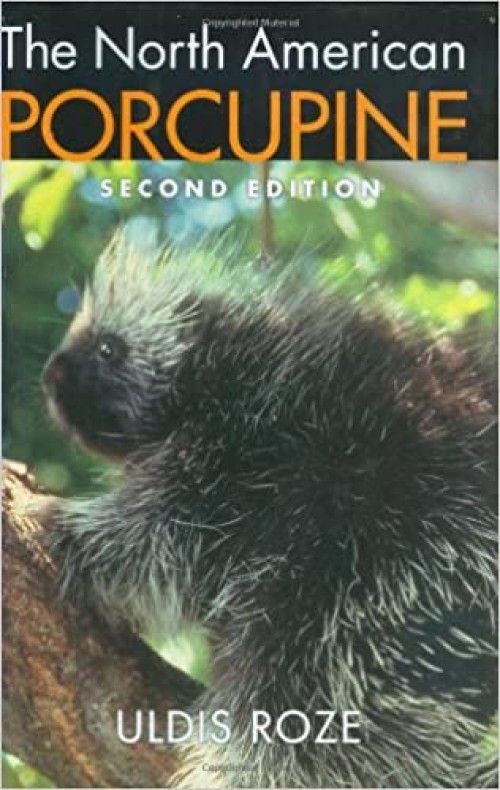by By Uldis Roze
Cornell University Press, Second Edition
“The woods are filled with stories, many of them undiscovered,” writes Uldis Roze. “Careful observation of almost any organism is likely to yield surprise and delight.”
For Roze, curiosity about porcupines he encountered on his land in New York’s Catskill Mountains has inspired a passionate, decades-long pursuit to learn everything there is to learn about the spiky rodent. The North American Porcupine, recently released in a second edition, summates these efforts.
Alas, The North American Porcupine seems unlikely to show up on this fall’s “nature & outdoors” bestseller lists. In keeping with its subject animal, the book presents a forbidding exterior. Although the jacket includes an attractive color photo, the font, format, and plain title combine to create a college textbook “read-this-it’s-good-for-you” appearance, a look that may deter potential readers.
Ignore the cover. This is not some dreary textbook, but an engaging, quirky read. Roze has a gift for physical imagery. A porcupine molting in spring has “fur blowing like a dandelion clock.” A second porky makes a winter den inside “a strange old sugar maple like a giant bird’s leg kicking skyward.”
Roze, Professor Emeritus of Biology at Queens College, writes with the warmth and confidence of a favorite college professor. He has a knack for balancing detailed scientific explanations with personal anecdotes, presenting what could be dry information with page-turning appeal. For example, his discussion of quill anatomy segues into a cheerful description of his own quilling by an irate porcupine, and the subsequent journey of one of these projectiles through the interior of Roze’s arm. Two days later, the quill emerged while Roze was teaching a lab class. This reemergence segues to another scientific discussion: why didn’t Roze suffer a massive infection? Because porcupine quills are coated with antibiotic grease. This grease protects porcupines who self-impale (they have an alarming tendency to fall out of trees), as well as unwary college professors.
The second edition of The North American Porcupine also describes several new discoveries made by Roze in the 10 years since initial publication. One of these discoveries: why porcupines ingest clay. The reason has to do with the digestive arms race between porcupines and the trees they forage, spring through fall.
“Trees do not wait for animals to eat them,” Roze notes, but instead defend themselves by changing their tissue chemistry over the year. Sugar maple buds, for example, make for good snacking in early spring, but the trees soon fight back by saturating leaf tissues with defensive, inedible tannins. Porcupines respond to such tactics by repeatedly shifting their diets, taking advantage of the most edible (vulnerable) periods of different tree species. Eating clay also helps porcupines, Roze hypothesizes, by neutralizing some plant toxins.
One of the most compelling revelations of this book is the author. Here is a man who has squeezed himself into rock dens, chased a porcupine up a tree to inspect (then cure) its scabies infection, and raised an orphaned porcupette from infancy, taking on the responsibility “not only for her feeding and accommodation, but her emotional and intellectual development, as well.” As one of the many organisms inhabiting the northern woods, Uldiz Roze himself is a “surprise and delight,” well worth observation.
- Reviewed by Elise Tillinghast


